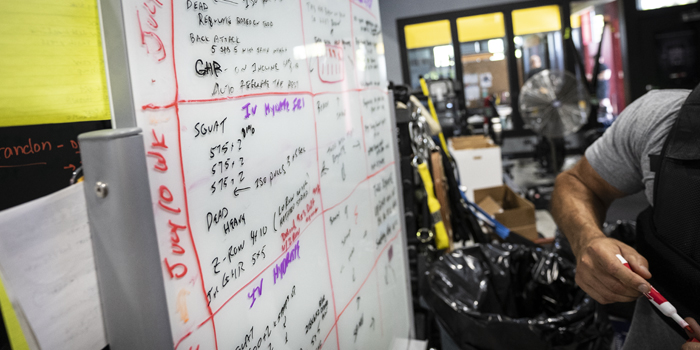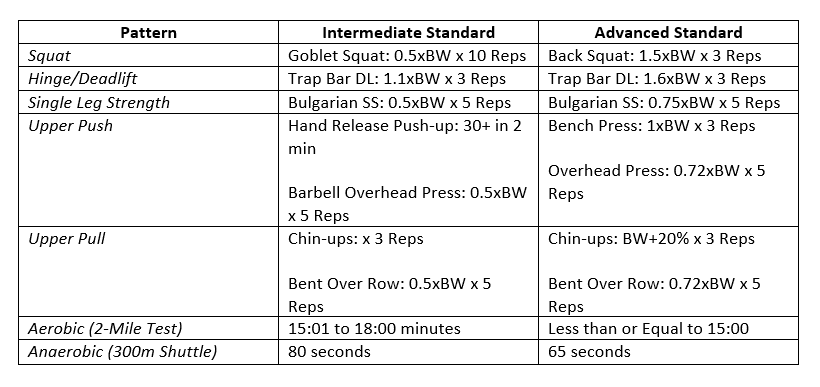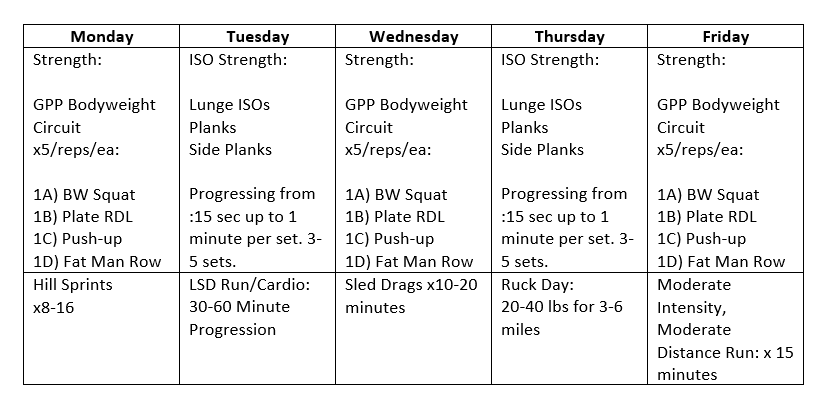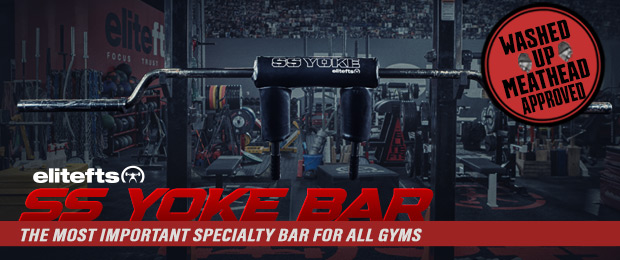
With the increase in coaching opportunities through military contracts across all branches, one of the most challenging aspects for many is adapting to the population and the sheer number of people your program serves.
In this article, I will present the system outline my colleagues and I use for grouping individuals based on their ability to complete the training. Not necessarily the occupational demands (although those are extremely important and are a part of the needs analysis) or purely on fitness testing scores (ACFT, PFT, PRT, etc.) but on their ability to execute movement patterns at a pre-determined proficiency and capacity.
Step 1: Assessment
Most organizations have their testing standards already, and in some cases, they continually try to improve their physical readiness tests by creating more comprehensive batteries that include all physical qualities required for a specific population. While not all military/LE/Fire agencies/departments have implemented more robust performance testing, not everyone has.
To address this deficiency within the individuals we work with, we created a testing battery that is centered around general physical preparedness (GPP) and proficiency in the execution of a variety of movement patterns, along with performance on conditioning-based tests, including aerobic and anaerobic options. While this testing battery varies slightly depending on unit and coaching style, the following patterns/tests are included in every variation:
- Squat
- Hinge
- Single Leg Strength
- Upper Body Push (Horizontal and Vertical)
- Upper Body Pull (Horizontal and Vertical)
- Anaerobic Test
- Aerobic Test
Performance in each pattern is graded on a set of criteria for range of motion, stability, and generally comes with performance standards for which that proficiency needs to be maintained. This is more easily understood with the following table:

All of these standards are based on either fitness testing scores (in our case, the ACFT where intermediate correlates to a score of 70/100, and advanced a score of 90/100) or the base phase of the training program they are testing into, and what level of preparedness is necessary for them to make the greatest progress over time with the program.
To be grouped intermediate, an individual must meet at least five of the intermediate standards. Anyone who does not meet at least five intermediate and/or advanced standards is grouped with the novice.
To be grouped advanced, an individual must meet five or more advanced standards and at least meet the intermediate standard on the other four events. This system allows for differences in strengths and weaknesses, while relatively simply and effectively grouping individuals on their ability to complete the programming as written.
Everyone re-assesses for approximately 12-16 weeks to try to move into the next ability group and to validate the effectiveness of the novice and intermediate programs. The advanced group is measured primarily through MSK injury rates and fitness test scores.
Step 2: Programming For All Three Ability Groups
Our primary consideration when programming is the needs of that ability group. What each group primarily needs varies based on the assessment. For the novice group, that is GPP and movement quality in basic patterns. For the intermediates, there is still some focus on GPP and improving maximal strength in those patterns. For the advanced group, the primary focus is on optimizing training through further methods such as the dynamic effort, maximal effort, and repetition effort methods, amongst all other variances you can think of.
The weekly template is different between units. Some hold on tightly to tradition and refuse to adjust certain days, such as Tactical Tuesday or Ruck Thursdays, to better fit an optimal training schedule. This is one schedule that I have used since starting, and while I would make changes, it has worked well so far, particularly for the novice group.

For novices, this accomplishes motor learning through repeated exposure to movement patterns, while building GPP through increasing volume week-to-week within the same timeframe, thus increasing training density.
The same basic schedule is what we’re stuck with for the intermediate and advanced groups. Still, the days will vary in volume and exercise selection, including far more variety, intensity, etc. An example of the intermediate program (majority of individuals) might look like this.

As you can see, there are some serious similarities in the overall structure, with some more variation, the introduction of dynamic and max effort work, to include more special exercises. This way, we accomplish all physical qualities in a training program without being forced to dedicate extended blocks of training for singular adaptations.
Step 3: Implementing the Program
How we run the program involves a heavy focus on educating the leadership at all levels within the unit—passing on the knowledge from the S&C professionals to the NCOs/Chiefs/Officers/etc. Part of that involves teaching them the assessment, process, and set-up for their specific equipment and available space. The goal is to create more autonomy and a self-sufficient culture of training intelligently. Many in these populations know how to train hard. Arming them with the tools to better assess, action, and re-evaluate the training will significantly impact the overall fitness and capabilities of a unit/station and every single one of the men or women that work in those occupations.
Conclusion
I believe this piece of the puzzle is what sets tactical strength and conditioning apart from its athletic counterparts. Hopefully, for the new coaches making the jump, you can find a way to implement something I laid out here to improve programming for the professionals you are working with, whether their training age is 0 or 20+ with skin in the game.
Garrett Timko is a strength and conditioning coach working under the Holistic Health and Fitness (H2F) with the United States Army. He is a Marine Corps veteran. Garrett has been a strength and conditioning coach for seven-plus years, including work in the private sector, Division 2, and Division 1 collegiate athletics before switching to tactical strength and conditioning.










